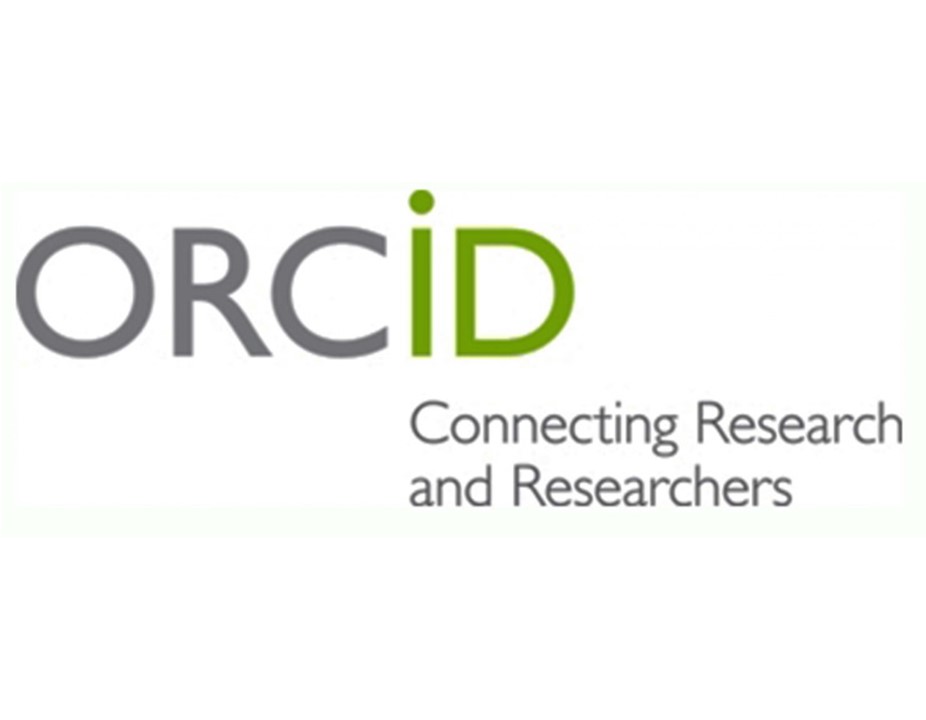ORCID ID
An ORCID (Open Research and Contributer ID) ID is an internationally recognized identification number for academics. It is generated when a researcher creates an ORCID profile and can be used to make the researcher's own research and publication activities more visible and to simplify communication with institutions such as publishing houses.
Typical uses of an ORCID ID are:
- contact with publishing houses
- contact with providers of funding and third-party funding
- at conferences and congresses
- in presentations
- on homepages
- in academic online networks
Please note that to be eligible for publication funding from Mainz University of Applied Sciences your publication must be linked to your ORCID profile via your ORCID ID.

GENERAL INFORMATION & BACKGROUND
You will need an ORCID ID if you wish to apply for funding from the publication fund of Mainz University of Applied Sciences.
Using an ORCID ID also offers you a number of advantages, including:
- Direct linking of your research activities to your profile
- Higher visibility of your research activities
- Simplified communication with publishing houses and third-party funding bodies
The ORCID ID has already been integrated into various processes and systems, including databases and search services (such as BASE, PubMed, Web of Science, etc.), publication and peer review processes (at Springer Nature, Wiley, etc.), and application systems (such as DFG elan).
Current figures on the worldwide use of the ID can be found on the ORCID statistics page:
The number is issued by ORCID - an independent and non-profit organization. Its goal is to help researchers make their research more visible and network more easily, as well as to simplify work processes.
For more information, visit the organization's website:
The ID consists of 16 characters. As part of a web address, it can be used to access a researcher's ORCID web profile.
Here is an example:
- 0000-0001-7260-8718
- ..ttps//orcid.org/0000-0001-7260-8718
Searching with an ID: If you want to use an ID to retrieve a researcher's corresponding ORCID profile, you have two options:
- Go to the ORCID website and enter the ID in the search field (for example: 0000-0001-7260-8718).
- In your browser's address bar, enter the URL version of the ID (for example: ..ttps//orcid.org/0000-0001-7260-8718).
Searching for an ID: If you would like to look up a researcher's ID, you can search the ORCID website by entering their first and last name in the search field:
REGISTRATION & ADMINISTRATION
You should only have one ORCID profile and one ORCID ID. If you are unsure whether a profile has already been setup for you, you can search the ORCID website by entering your first and last name in the search field.
If a second profile has been mistakenly created for you, or if you are unsure about a profile with the same name, you can request a verified merge via Account Settings > Remove duplicate record. If you have any problems, the ORCID support team is available to help you:
How to proceed:
- Go to the orcid.org website.
- First check whether you already have an ID. To do this, search by entering your first and last name in the search field.
- If no ID is found: Click on "Sign In/Register". A login and registration window will appear. There, below the "Sign In" button, select Register Now.
- Follow the registration process (the following are requested: first name, last name, email address; password you create yourself).
- Once the registration is completed, your ORCID ID will be created.
- Add your profile as you wish (for example, employer, education, publications, advancement, etc.), and specify who is allowed to read your information ("everyone" / "trusted parties" / "only me").
How to proceed:
- Log in to orcid.org with your profile credentials (email address and the password you chose).
- Click on "View my ORCID record" in the drop-down menu at the top of your name. This will take you to your input window.
- In the "Work" section, select "Add Work" to choose from different ways to link your publications to your profile.
Options include:
- Search & link: allows you to search for publications using the "Link Wizards" of various ORCID partners. Here's an example: Select "Crossref Metadata Search", agree to search and have your publications searched by name. Hits can be added to your profile by clicking on "ID Add to ORCID"
- Add DOI: link using a DOI (digital object identifier)
- Import BibTeX: Transfer of publication data from a BibTeX file
- Add manually: Input by hand using an input field
Your name and ORCID ID are always public and can be viewed by all. In addition:
- All profile content is voluntary.
- You can specify who can see the profile content you post. Three options can be selected for individual or for all content: "everyone", "trusted parties" and "only me".
- You decide which rights you grant to "trusted parties" (linked databases, publishing houses). You can change or revoke the assigned rights at any time in "Account Settings".
- You can deactivate your profile at any time, thereby deleting all stored content.
You can deactivate your profile at any time. All information connected to it will be deleted. Only a "fragmented" version of your email address will be retained. You can reactivate your account at any time.
To deactivate your profile, select "Account Settings" from the drop-down menu at the top, then "Deactivate this ORCID record...". You will then be provided with more information.
Data protection and privacy & support
Use the following links to find out about data protection and ORCID:
- ORCID Inc privacy policy
- ORCID blog post. ORCID and data protection in Germany (only available in German)
- Schallaböck, J., von Grafenstein, M. (2017). ORCID aus datenschutzrechtlicher Sicht: "Gutachten im Auftrag des von der Deutschen Forschungsgemeinschaft (DFG) geförderten Projektes ORCID DE zur Förderung der Open Researcher and Contributor ID in Deutschland" (only available in German)
The ORCID support team provides you with a form:
You are also welcome to contact our library team at:

